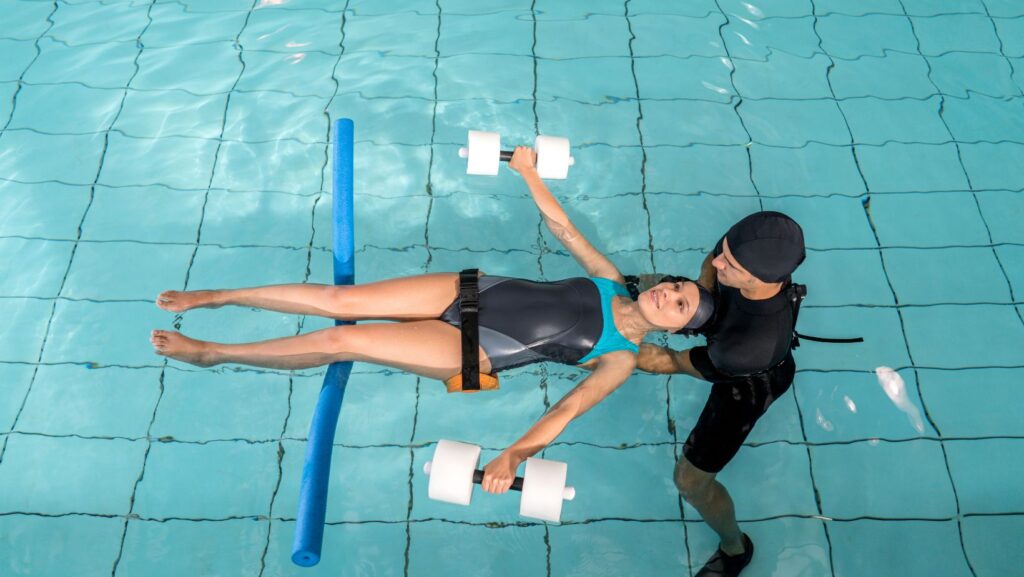
Healing from wounds or diseases may be a difficult and sometimes frustrating process. It may cause mental discomfort, bodily pain, or a feeling of losing one’s independence. Even while rest is frequently advised as an essential component of healing, including focused exercise in your recovery plan, will help you return to peak health much more quickly.
We will look at some methods that exercise might speed up your healing process in this post. We’ll talk about the many benefits of exercise, including how it may strengthen muscles, increase range of motion, speed up tissue healing, reduce discomfort, promote blood circulation, enhance balance and coordination, and improve cardiovascular health. You may take charge of your rehabilitation and reclaim your independence by being aware of the advantages of exercise and including it in your recovery plan.
Speak with a Medical Professional
It is essential to speak with a licensed physical therapist or healthcare provider before beginning any new fitness program. They are able to evaluate your particular condition, choose suitable workouts, and offer individualized advice to guarantee a quick and safe recovery.
This is a crucial stage since every person has different healing needs, and a trained specialist can customize an exercise regimen for you. They may also assist you in avoiding difficulties or disappointments that could occur if you try exercising on your own without the right supervision.
Start Low and Move Gradually
Start with easy workouts that you can perform right now. As your body adjusts, progressively increase the time and intensity of your exercises. This method guarantees a long-lasting healing process and aids in the prevention of re-injury.
It’s crucial to remember that jumping into intensive training too soon might cause setbacks and cause your recuperation period to lengthen. Your body will have more time to strengthen and adjust if you begin gently and increase the intensity gradually, which lowers the chance of re-injury.
Concentrate on Range-of-Motion Practices
Exercises including a range of motion aid in regaining flexibility and avoiding stiffness. During these exercises, the damaged joint is moved through its whole range of motion, with the range being gradually increased as tolerated. Gentle stretches, yoga positions, and aided movements are a few examples.
You may lessen stiffness, enhance function, and stop the development of scar tissue that may restrict movement by increasing your range of motion. Because range-of-motion exercises increase blood flow to the afflicted region, they can also help alleviate pain and discomfort.
Look for Rehabilitation
Look into centers for rehab in malibu if you’re looking for a thorough and encouraging rehabilitation atmosphere. World-class rehabilitation centers with skilled staff that can provide individualized treatment and direction may be found in Malibu.
Do Balanced Activities
Exercises for balance assist in increasing stability and coordination, which lowers the chance of falls and injuries. Balance-boosting exercises like yoga, tai chi, and standing on one leg can help. Enhancing your balance might help you lower your chances of falling and being hurt again, which is crucial while you’re healing.
Include Strength Training
Enhancing stability and promoting healing can be achieved by strengthening the muscles around the damaged region.

To target the problematic muscles, conduct workouts using resistance bands or small weights. As your strength increases, start with minimal resistance and progressively increase.
Give Cardiovascular Exercise a Top Priority
Walking, swimming, and cycling are examples of cardiovascular activities that can assist in increasing oxygen supply to wounded tissues and blood circulation. This improved blood flow lessens inflammation and aids in healing.
Take Hydrotherapy into Account
Exercises in the water, which provide a supporting environment and lessen joint tension, are part of hydrotherapy. Water’s buoyancy can facilitate movement and increase the range of motion. People with joint discomfort or restricted movement can benefit most from hydrotherapy.
Engage in Core Strengthening Exercises
Your entire body has a strong base when your core is strong. Exercises that strengthen the core, such as Russian twists, planks, and bridges, help increase stability and lessen the load on the damaged area.
Include Functional Training
Functional workouts help you get ready to resume your regular activities by imitating common motions. Examples include bending over and crouching, climbing stairs, and carrying groceries. These workouts enhance general function, strength, and coordination.
Take Classes for Group Exercise
Exercise sessions in groups may offer inspiration, encouragement, and an overwhelming feeling of belonging. Seek out classes that meet your exercise level and recuperation objectives.
Observe Proper Form
To get the most out of your workouts and avoid reinjury, you must practice proper technique. Consult a trained fitness instructor or a healthcare provider for advice if you are unclear about the correct form.
Pay Attention to Your Body
It’s critical to pay attention to your body and refrain from overexerting yourself. Stop the activity and take some time to relax if you feel pain or discomfort. The healing process may be slowed down by pushing through discomfort.
Put Getting Enough Sleep and Rest First
As vital as exercise is, you also need to give your body enough time to relax and heal. Try to get between seven and nine hours of good sleep every night to aid in the healing process. Your body improves the immune system, restores energy, and repairs tissues as you sleep—all essential for a quicker recovery.
Control Your Stress
Prolonged stress might impede recuperation by delaying the healing process. The body’s “fight-or-flight” reaction is triggered by stress, which directs resources away from healing and toward getting the body ready for an imagined attack. Include stress-reduction strategies in your daily routine, such as yoga, practicing deep breathing, or meditation. These techniques can ease mental tension, lower cortisol levels, and encourage relaxation—all of which aid in the healing process.
You can overcome the obstacles of rehabilitation by surrounding yourself with a network of relatives and close companions who are there to support you.

Connect with people who have experienced similar circumstances, share your stories, and ask for support. Having a solid support network may ease your emotional burden, lower your stress level, and increase your drive.
Conclusion
Setbacks are possible, and recovery takes time. Remain optimistic and have patience with yourself. Keep in mind that rehabilitation is usually a slow process, and you may reach your objectives if you are persistent and consistent. The process of healing is not always straightforward. There will be good days and terrible days, but it’s critical to have your long-term objectives in mind and not let little failures deter you.












